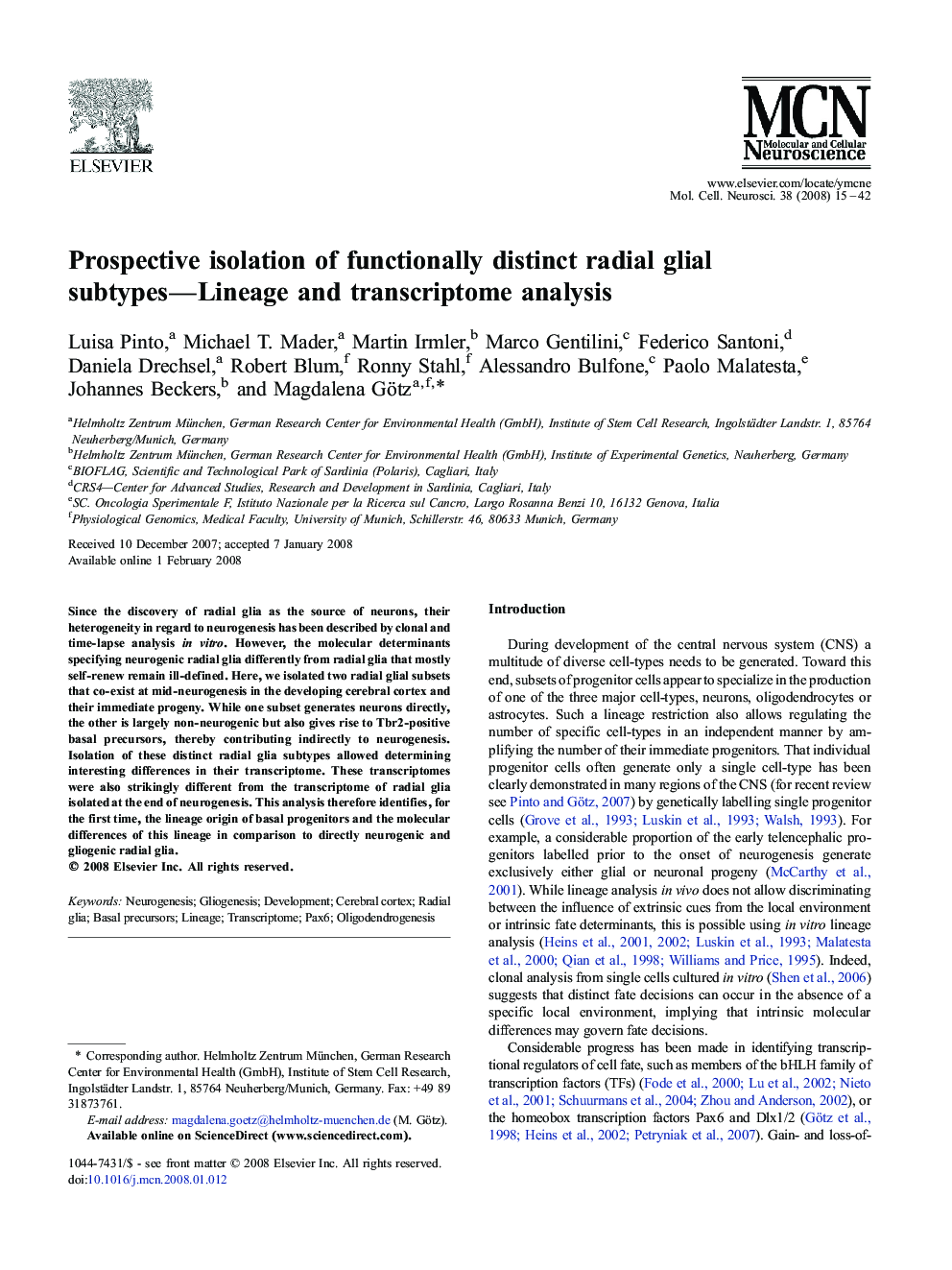| Article ID | Journal | Published Year | Pages | File Type |
|---|---|---|---|---|
| 2199056 | Molecular and Cellular Neuroscience | 2008 | 28 Pages |
Since the discovery of radial glia as the source of neurons, their heterogeneity in regard to neurogenesis has been described by clonal and time-lapse analysis in vitro. However, the molecular determinants specifying neurogenic radial glia differently from radial glia that mostly self-renew remain ill-defined. Here, we isolated two radial glial subsets that co-exist at mid-neurogenesis in the developing cerebral cortex and their immediate progeny. While one subset generates neurons directly, the other is largely non-neurogenic but also gives rise to Tbr2-positive basal precursors, thereby contributing indirectly to neurogenesis. Isolation of these distinct radial glia subtypes allowed determining interesting differences in their transcriptome. These transcriptomes were also strikingly different from the transcriptome of radial glia isolated at the end of neurogenesis. This analysis therefore identifies, for the first time, the lineage origin of basal progenitors and the molecular differences of this lineage in comparison to directly neurogenic and gliogenic radial glia.
